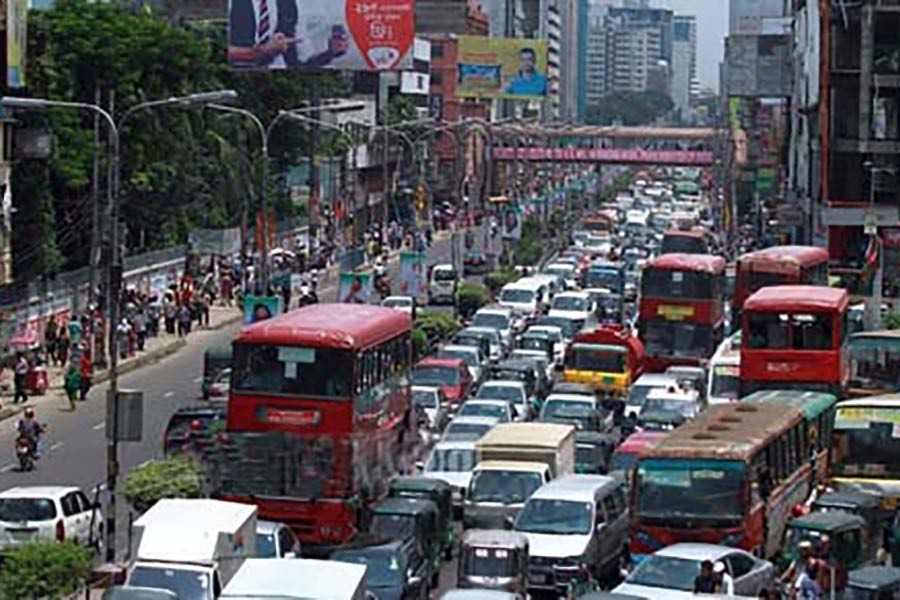Dhaka North City Corporation (DNCC) Mayor Atiqul Islam has recently ventured the suggestion that, if authorised, his office can help manage the ever-worsening traffic mess of the capital city. His idea is to reduce the number of motorised vehicles plying the city streets according the number plates they bear. More to the point, his proposition is that vehicles having the number on their licence plates that ends in odd digits will move on odd-numbered dates of the week. Similar rule will apply for vehicles having even-numbered licence plates. Also called, 'Road space rationing,' the idea is not new and have been in use in many big cities of the world. Banning the movement of private cars with particular numerals on their number plates on certain days of the week or at certain hours of the day is definitely a tested way to ease pressure of road traffic as well as reduce fatal road accidents. But there are also other ways to reduce the pressure of traffic on the roads. These include, for example, charging toll for using certain roads, increasing fees for travelling on congestion-prone roads, increasing parking fees for private vehicles, increasing fuel price (this measure, however, may not be applicable in our case in the present situation of high fuel price), taxing vehicles that travel more as reflected by the mileage on the mileometer at year end, making some roads car-free and, finally, restricting ownership of private car by introducing lottery-based licencing. And depending on the situation, the city mayor(s) or whoever is in charge, may choose one of the measures or a suitable mix of them and apply it in our particular case to tame the unwieldy Dhaka traffic.
However, the most crucial aspect of any idea is to put it into practice. This is also true to the one from the DNCC mayor. But how is he going to implement his idea? Has he devised a plan for it? There is also the mayor of the Dhaka South City Corporation (DSCC). Is his idea in tune with that of the latter? In that case, a coordinated approach will be required if his idea is to be given a try across the entire city. And to get the ball rolling, it would require necessary trained manpower as well as technological support. Also, the traffic department, the law-enforcement authority and other government bodies concerned will have to work in concert with the city mayors for the idea to see the light of the day.
Side by side with organising the body, preferably an autonomous one, to establish discipline on the capital's disorderly road traffic, it would also be necessary to develop a database on the actual number of vehicles plying the city roads. Also, the patterns of the vehicular movements have to be closely monitored. An army of trained personnel will have to be employed to do these tasks. Assuming that all these arrangements are duly in place, can one then assume that the answer to the city's hellish traffic has finally been found? Perhaps not. With its present human as well as vehicular population, the capital city at the moment is actually bursting at the seams. It needs expansion. More arterial roads need to be built to accommodate the increasing number of people and vehicles. If necessary, administrative, business and industrial centres of the city should be relocated to satellite towns connected to Dhaka. In fact, a more drastic step than just vehicular management will be necessary to untangle Dhaka's traffic knot.


